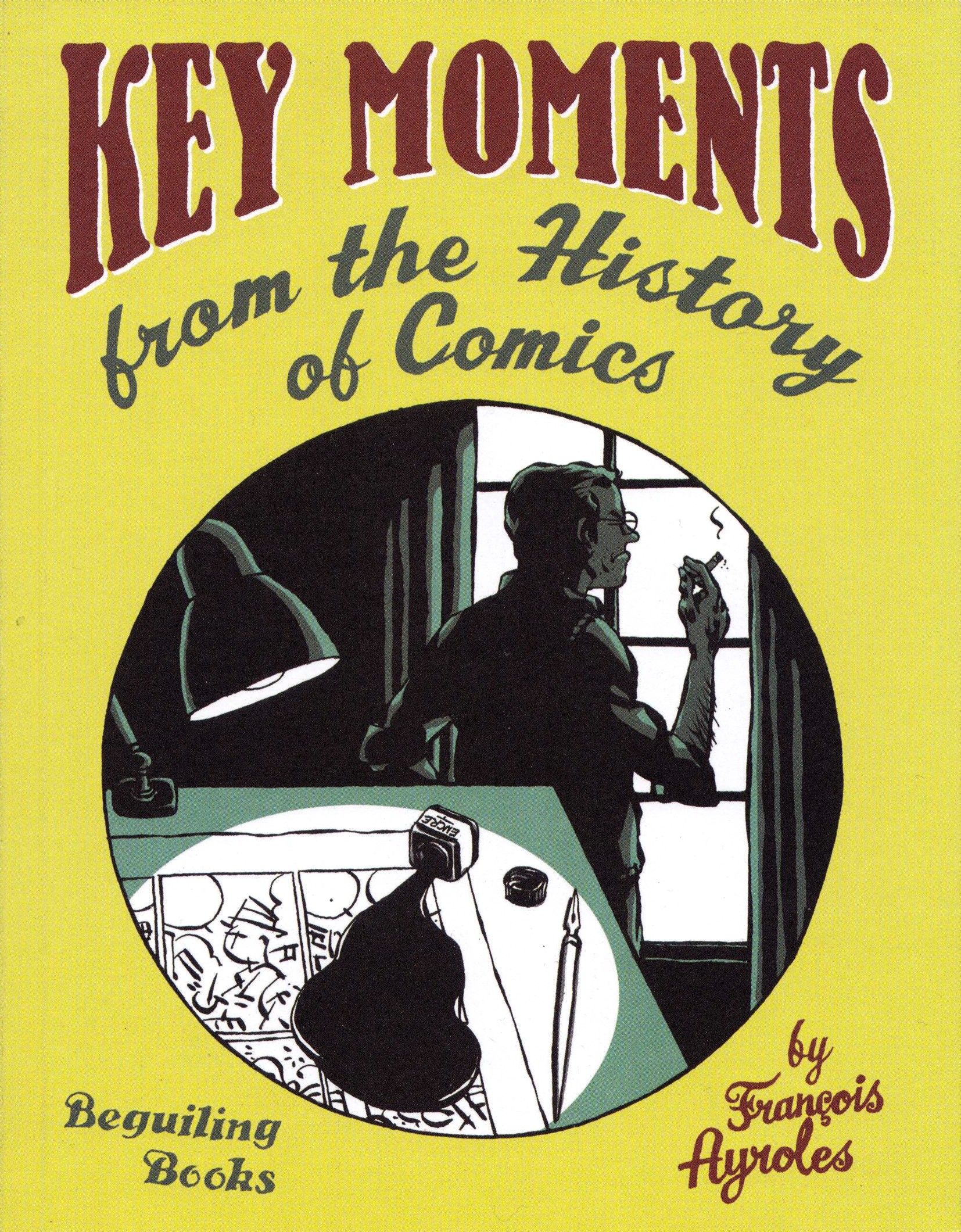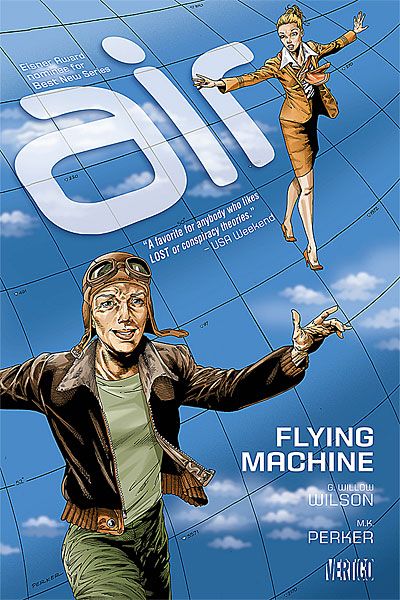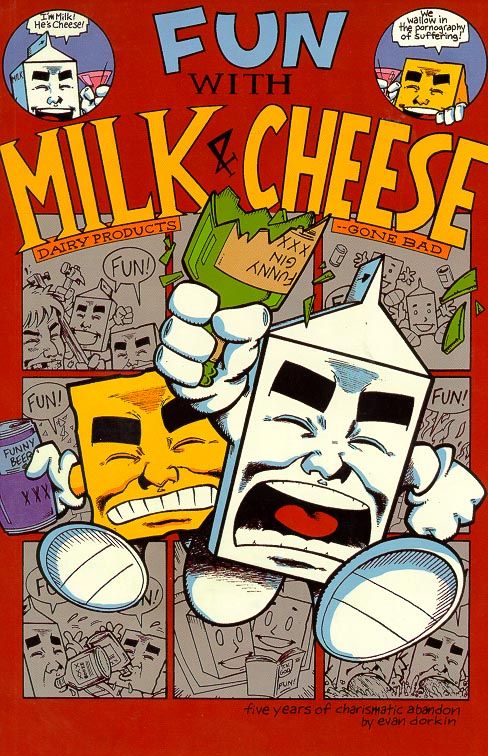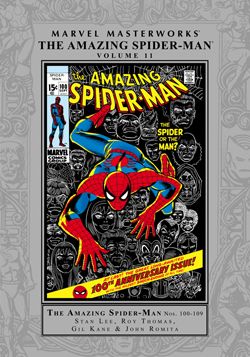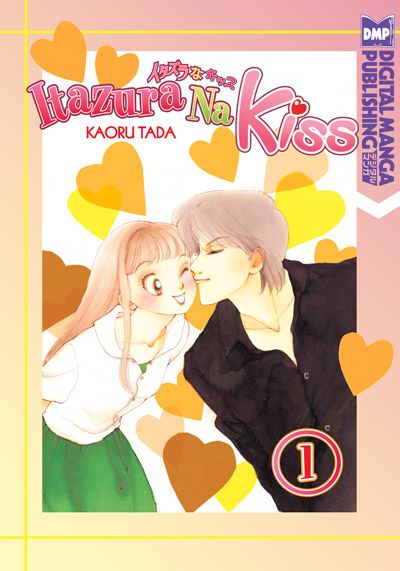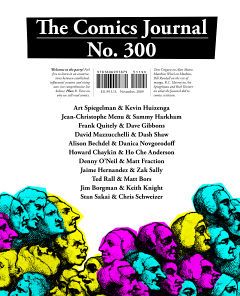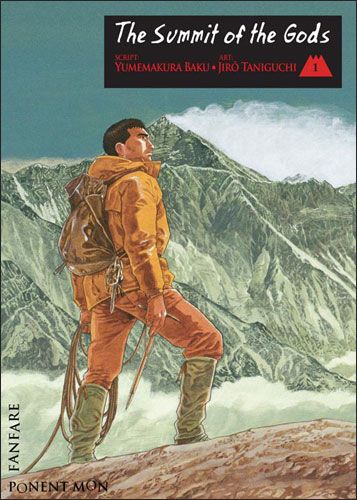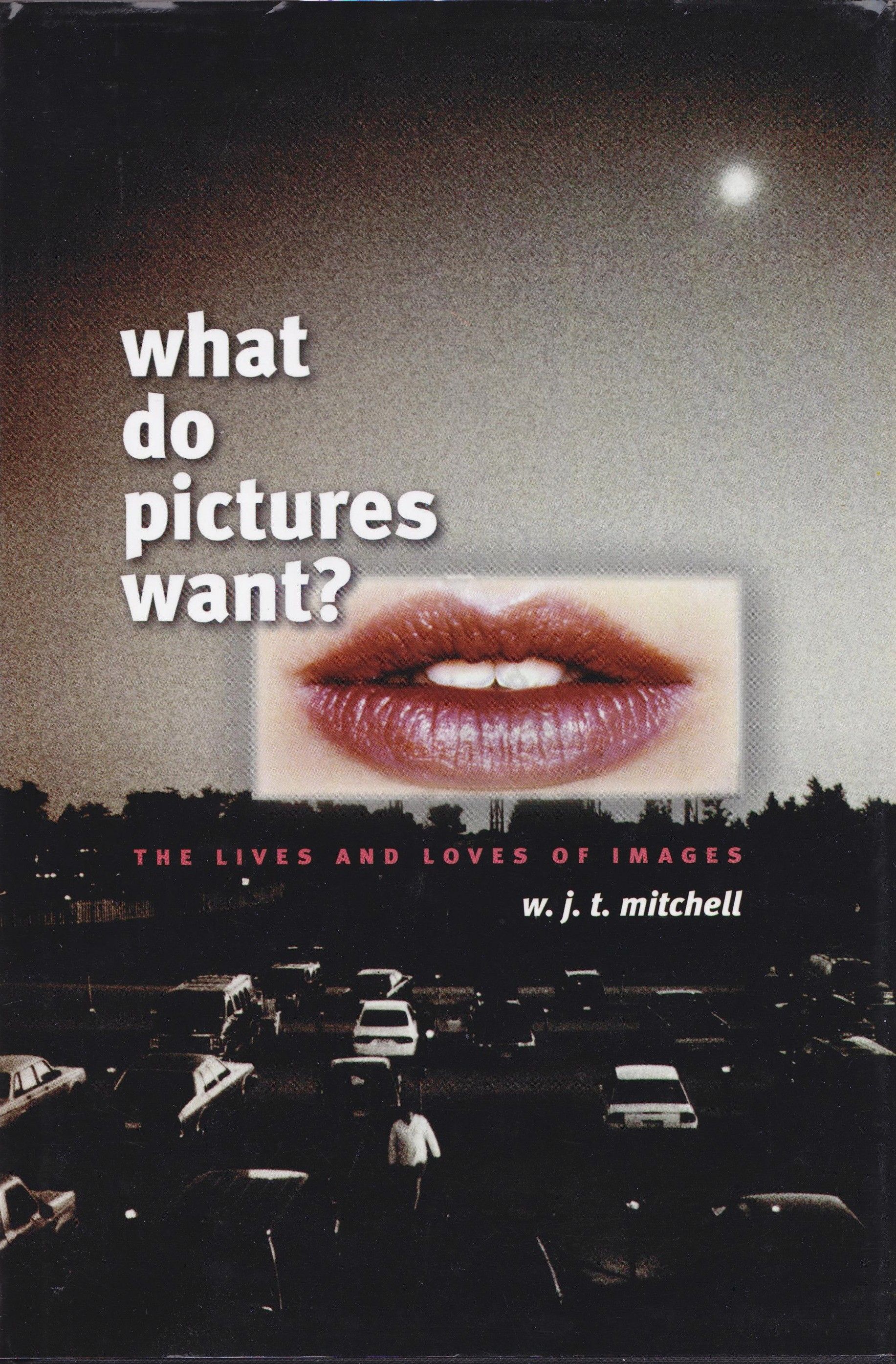Having had Thought Ballonists' Craig Fischer over as our WAYR guest the other week, it seemed more than appropriate to invite his blogging colleague, scholar, educator, critic, author and all-around nice guy Charles Hatfield.
Find out what Mr. Hatfield is reading and see some embarrassingly complimentary birthday greetings about yours truly by clicking on the link below. And don't forget to tell us your own reading picks in the comments section.
Matt Maxwell: TASTY BULLET
Arnold Pander/Jonathan Vankin
Been a fan of the Panders since their work on GRENDEL back in ... 1986 ... and I usually pick up just about whatever they work on. Which hasn't been a vast body of work since then, but I generally find myself entertained by their art. The story in TASTY BULLET is kinda thin, though the macguffin is different (energy drink addiction that turns into teenage leprosy unless the fix is maintained). The artwork, however, really makes it. Passing on the superlatively clean lines of some of their work (though that might've been the inkers at play), TASTY BULLET is a bit rougher though no less kinetic than I've come to expect. An entertaining enough read, but not as meaty as I'd hoped. Still, tons more energy than your average superhero comic page and a willingness to actually distort and bend (not just musculature, neither) to get the point across.
Started reading this (which I'm reading in trades, sorry, Willow) but had to put it aside as I'm finding myself deluged in research reading for my first prose project in a very long time. Still, the first two chapters are the kind of deftly magical wonder that I was hoping they'd be. Hoping to squeeze some more time in to finish this shortly, as I'm interested where the setup from book 1 is leading, and the creator's voices are unique enough that even if the destination is a letdown (which I don't see happening), the journey itself is quite engaging.
Research reading, however, has taken over my life. I haven't even been to a comic store to pick up JONAH HEX or the latest volume of SCALPED.
HALIBURTON'S ARMY (for a project that's been shelved for the time being, sadly)
THE INFRASTRUCTURAL CITY: NETWORKED ECOLOGIES IN LOS ANGELES (ditto)
THE BOOK OF LIES: THE DISINFORMATION GUIDE TO MAGIK AND THE OCCULT
THE INSIDE STORY OF THE CHURCH OF THE FINAL PROCESS
Yeah, this next project's gonna be ... interesting.
Tim O'Shea: The benefits of the great SLG sale landed at my house this week. And wow, what a great load.
In one little box, I got Fun With Milk and Cheese as well as Dork 1 by Evan Dorkin (more on Dorkin later); Flee Puny Humans!: Comic Book Heaven by Scott Saaverdra; Richard Stark's Parker: The Hunter by Darwyn Cooke; Paris by Andi Watson and Simon Gane; and last but not least James Turner's NIL: A Land Beyond Belief and Rex Libris vol. 1: I, Librarian. I'll soon be running an interview with Turner. But in the meantime, let me beg you to pick up anything by Turner -- in an age of information overload, he provides a reader with an abundance of dialogue and visual detail that makes Brian Bendis seem like a minimalist.
Here at Robot 6, we don't do hokey "I love you guys" crap on a regular basis (thank God), but yesterday was WAYR Chief Chris Mautner's birthday. More than just saying happy birthday to Chris, I want to take this occasion to appreciate what a gift it is to work with him. Mautner knows more about comics and broadens my awareness on a weekly basis and for that I consider myself fortunate. And unlike some critics who inform while letting you know he or she is the smartest person in the discussion, Mautner sheds a little light on various subjects without condescension. Plus the poor bastard gets this column together every week, which is no easy task. Happy birthday, Chris, and thanks.
Now back to my weekly portion of babble, I picked up two weeks' worth of comics this week at the store. And of the past two weeks of comics, there are two issues that stand out for me. Mr. Dorkin has already gotten mentioned once in my reading pile for the week, but his name and work is worth a second mention. If you are not reading Beasts of Burden (which released its third issue last week), I would like to ask you to change your mind. Read this comic, don't wait for the trade. Dorkin's gift for dialogue is an asset to this project. The Orphan pursues a case without the rest of the Wise Dog Society in this issue. I really enjoyed how Thompson opened the story by giving readers Miranda's point of view in the narrative. It was a quirky way to kick off the tale. If you know nothing about Beasts of Burden, Dark Horse is kind enough to give you a free glimpse of the past stories before this current project, which can be found here.
The other standout is Jonah Hex 50. When this series started, if you had told me it would make it to a 50th issue, I would not have believed you. A Western period piece in this day and age? Well, I'm glad I was wrong. This is probably one of my favorite issues of the run. Why? Well Darwyn Cooke on art is a good place to start. Every time I read Cooke, I feel like I'm watching a movie -- a damn good movie. Add to the mix that the tale covers a year in the lives of Tallulah Black and Jonah (as well as an incredibly high body count) and you may understand why I enjoyed this issue so much. Congrats on
50, Misters Gray and Palmiotti.
Tom Bondurant: I read Amazing Spider-Man Masterworks Vol. 11, reprinting issues #100-09 in glorious color. I don't know how these stories have been received by dedicated Spider-fans, but I don't think the three-issue Morbius/Six-Armed Spidey saga has the best reputation. Me, I thought it was just kinda goofy, and actually was undermined by the coloring -- the bare extra arms contrasted so completely with Spidey's red-and-blue costume that it was easy to ignore them. Maybe I read a recolored version, because the story creeped me out as a kid. Anyway, the rest of the book contains a team-up with Ka-Zar, a nicely-done Spider-Slayer arc, and two issues where Flash Thompson is targeted by Vietnamese mystics and ends up needing Dr. Strange's help. Overall, these were fun stories, written either by Stan Lee or Roy Thomas and drawn either by John Romita Sr. or Gil Kane. Nothing against Romita, but I especially got a kick out of Kane's work, because it is, quite frankly, the kind of thing I imagine when I think of early-'70s Marvel. Lots of giant floating heads, weird up-the-nose angles, and very dynamic. Finally, these last two Masterworks volumes have really ramped up the Peter/Gwen relationship, sometimes to ridiculously melodramatic levels, but enough to make me realize what a big presence she was in the book. There's a scene late in this volume where she actually inspires genuine self-reflection in Aunt May, and I don't ever remember seeing that in the previous hundred-odd issues.
I also read Manhunter: The Special Edition, a compilation from about ten years ago which reprints all of Archie Goodwin and Walt Simonson's classic Detective Comics saga, plus a wordless epilogue from Walt Simonson which serves as a nice little coda. "Manhunter" is a neat little story because it's about a guy who fights to reclaim his identity, and does it in such a definite way that it resists any and all attempts at revival. I'm sure Gerry Conway in Secret Society Of Super-Villains and Kurt Busiek in The Power Company had the best of intentions with their Manhunters, but there is such energy and power in Goodwin and Simonson's work that anyone would have a hard time following them. "Manhunter" is a spy thriller told like a martial-arts flick and dressed up in superhero clothes, and I could read it every day and not love it any less.
After that I read the second volume of Hulk Visionaries: Peter David, drawn mostly by Todd McFarlane with some work by Erik Larsen and Jeff Purves. It starts with another Wolverine/Hulk fight, includes the Leader/"Gammatown" storyline (which closed off McFarlane's run), and ends up with two issues of "Mr. Fixit" in Las Vegas. I still don't think McFarlane was a great fit for the book -- his characters are very stylized and it's hard to get past those '80s hairstyles and fashions -- but man, the conclusion of "Gammatown" was suspenseful. Unfortunately for Purves, either the printing was off in the original issues or it's off in this reprint, because his stuff (inked by Mike and Val Gustovich) looks very sketchy. Still, I'll be on the lookout for volume 3, because I've heard good things about the Vegas arc.
And before I forget, happy birthday Mr. Mautner! Am I remembering correctly that you had both the Superman/Batman: Public Enemies DVD and the extended director's cut of Watchmen on your wish list...?
Brigid Alverson: Here’s something that’s a bit of an oddity: Harlequin Romances that have been adapted into manga in Japan and then translated into English for American readers. Dark Horse was the original American publisher, but they dropped the line a while go and now Digital has picked it up as web manga. I started out with a Victorian tale, Prisoner of the Tower, and let me just say that this is the shoujo-est shoujo manga I have ever seen. Even by manga standards, the art is incredibly stylized: Enormous, brimming, twinkling eyes; dashing swoops of hair (on the male lead only), long meditations under a starry sky. They seem to have boiled the novel down to its essence as well, stripping away all the subplots and side characters and everything that isn’t the heroine thinking about how she will never have true love, or the man who loves her brooding about how he can’t have her. If Fruits Basket was too manly for you, then this is the manga for you.
Slightly less girly, but still in the realm, is Itazura Na Kiss, a school romance also published by Digital; unlike most of their print manga, this involves a romance between a boy and a girl, rather than a boy and a boy. But OK, Japan, can’t you come up with a better way to match the young’uns up than having a girl make a formal profession of her love to the boy of her choice in front of half the school? Because nine times out of ten, at least in manga, that ends up in disaster. That’s how Itazura Na Kiss starts out, and because Japanese students apparently find high IQs to be incredibly sexy, the ditzy heroine of this book doesn’t stand a chance. Through one of those incredible coincidences only found in manga, however, they end up living in the same house, and… well, that’s as far as I’ve gotten. Despite its stereotyped story, this book has a lot of good humor, and I'm looking forward to finishing up this satisfyingly thick first volume.
On a more cerebral note, I’m a big fan of the series ES: Eternal Sabbath, so when David Welsh compared it to Night Head Genesis, I moved that book to the top of my stack. OK, ES has a lot more subtlety, but Night Head Genesis has a plot that really pops and art by You Higuri which, as David notes, makes anything better. It’s the old brothers with psychic powers handed over to a shady institution plot; the brothers bust out, of course, but danger haunts their every step. And, because they are drawn by You Higuri, they are hot! It’s good mind candy for weekend reading, but I’m not tossing out my complete set of ES because of it.
Finally, I want to second everything Tim said about Chris. In a field where people often cling to their fiefdoms, I’m always impressed with the breadth of his interests and his ability to dig into a subject and pull out the interesting parts. Plus he’s a genuinely nice guy, who manages to herd us together into this feature every week without bullying us in the least. Like You Higuri, he makes everything better just by being part of it. Happy birthday, Chris!
Chris Mautner: Well now I'm thoroughly embarrassed. Seriously, I don't take praise well -- I tend to work on the assumption that whatever I'm doing, I'm doing it wrong -- so I was sorely tempted to edit out everyone's comments, but then decided that was just being churlish and unfair. So I'll just blush and say thank you, you're far too kind and note that JK and Kevin work far, far harder than me at keeping this site afloat.
So anyway, what am I reading? Well, I'm knee deep in the latest issue of The Comics Journal. It's the big 300 and chock full of big meaty interviews between notable cartoonists. Your mileage is going to vary on these -- Dave Gibbons and Frank Quitely get real process-heavy and if you're not into reading about Cinq tablets and royalty statements it might get a big dry -- but I think it's safe to say that regardless of what kind of comics reader you are, there's something in here you're going to want to read.
I'm also reading the 4th volume of 20th Century Boys by Naoki Urasawa, which is currently in the lead for My Favorite Manga of 2009. This is just a consistently smart, sharp series and I really like how Urasawa opted to jump ahead a couple of years. Didn't expect that.
Finally, I read through Richard Sala's Cat Burglar Black. I don't have too much to add that Michael May didn't say in his review. The book feels a little incomplete in that it so clearly sets up room for a sequel, but still I really enjoyed it and liked seeing Sala work in a more kid-friendly, watercolor style for a change.
Charles Hatfield: Right now I’m reading Crumb’s Genesis. It’s a slow read, a feat of illustration to be savored at a patient crawl.
But I’m also reading lots of other things, partly because the next go-round of my perennial “Comics and Graphic Novels” survey course comes in the spring. Since, as usual, I’m eager to bring new or recent comics into the syllabus to keep things fresh, and since book orders for that course are past due (yikes), I’ve been on a tear, reading and re-reading comics and GNs around the apartment, asking friends both local and far-off for recommendations, bugging the comics retailer closest to campus, and, in general, trying to figure out, once again, how to send my students out into the world of comics so that their reading is not limited to the core texts. There are just too many things I feel the need to address in a comics survey, so I struggle to find the balance between too little and too much.
In other words, I’m now in the middle of the annual process of dreaming big and then whittling my dreams back down to size. To that end, I’ve been scouring my shelves for the first time in a long time, and making a point of digging up and reading comics that, in some cases, I bought years ago and then lost track of and, unbelievably, did not read (even comics that, to my surprise, turn out to include inscriptions and convention sketches from the artists themselves!).
Some of what I’ve been doing is re-reading, but most of it has been reading for the first time, either reading collected editions of comics I’ve previously sampled in serial form or just reading things that were brand-new and unknown to me when I bought them.
The last comic I finished was Vol. 1 of The Summit of the Gods by Jiro Taniguchi, based on a novel by Baku Yumemakura, which my fellow Thought Balloonist Craig Fischer talked about here a few weeks ago. Summit is an adventure/mystery in a hyper-realistic style about mountain climbing. It’s unusual for me to go nuts for a hyper-realist comic, but Summit is gripping stuff so far, a story about a pastime that becomes an obsession, somehow all tied into the mysterious disappearance of the first Everest-climbing expedition back in 1924. The tale gains in credibility from Taniguchi’s detailed scenic vistas and meticulous research into climbing practices, gear, etc. I’m considering this as a holiday gift for friends who are into climbing.
Besides Summit, over the past three weeks I’ve read at least the following (this is my latest tottering bedside stack):
Acme Novelty Library Nineteen, by Chris Ware
Bone Sharps, Cowboys, and Thunder Lizards, by Jim Ottaviani and Big Time Attic
Cat Burglar Black, by Richard Sala
Get a Life, by Dupuy & Berberian
Maybe Later, by Dupuy & Berberian
Good-Bye, by Yoshihiro Tatsumi
Hwy 115, by Matthias Lehmann
Key Moments from the History of Comics, by Francois Ayroles
Pluto, by Naoki Urasawa and Osamu Tezuka (I’m only up to Vol. 4, so I’m way behind, arrgh!)
Powr Mastrs 1, by C.F.
Swallow Me Whole, by Nate Powell
The Alcoholic, by Jonathan Ames and Dean Haspiel
The Ticking, by Reneé French
Vertigo: First Cut, a budget-priced sampler (2008) by various
Of these, I’m very keen on the Urasawa, French, Dupuy & Berberian, Powell, Tatsumi, and Ware books.
In addition, I’ve finished Annalisa Di Liddo’s scholarly book Alan Moore: Comics as Performance, Fiction as Scalpel (quite good), read a bunch of essays in the latest issue (11.2) of the International Journal of Comic Art and the recently-launched European Comic Art, pored over a bunch of comics drawn by JH Williams III for the sake of Thought Balloonists, read fitfully in Pictures and the Words That Fail Them by James Elkins and What Do Pictures Want? by W.J.T. Mitchell, and read a bunch of floppies, some recent (such as the last issue of Planetary or the various Hellboy franchise series I’ve been following) and some just neglected or misplaced or for some other reason unread, such as issues of Pop Gun War and Demo.
I’ve been following Batman and Robin by Grant Morrison et al., though with considerably less interest since Frank Quitely left the art, and World of New Krypton, by Robinson, Rucka, and Woods et al., with its implicit post-9/11 politics, that is, its take on how to be a leader in the face of “national security” concerns. It’s interesting, though, again, the art is not my cuppa tea. In addition, I recently “rescued” some early-seventies Kirbys that I didn’t have out of a cheapie bin at my local shop, so I’ve been, as I do so often, revisiting the master.
In non-comics reading, I’ve mainly been evaluating student work: part of the inevitable seasonal floodtide that comes pre-holidays. I’ve probably spent more time reading student-generated texts than anything else over the past three to four weeks. In particular, I’ve been reading papers analyzing retail environments, written by students in my “Studies in Popular Culture” course. Very interesting stuff!
Besides that, I’ve been cherry-picking articles from the last few New Yorkers, which makes for great take-it-as-it-comes reading, and working my way, slowly, incrementally, with a mixture of relish and aggravation, through the second novel in M. John Harrison’s “Viriconium” cycle, A Storm of Wings (1980). The latter is a deliriously stylized, morbidly gloomy fantasy with some of the most bizarre invented landscapes and other descriptive surpluses I’ve ever seen in high fantasy (and I’ve seen plenty). A sort of kissing cousin to Peake and Moorcock. The book works like a certain kind of drug: it has almost no narrative momentum, but an overwhelming sense of place and style. Sometimes I like to stop and reread certain descriptive passages out loud; it’s that kind of book. I’ve got the Pocket/Timescape paperback edition, with a Michael Whelan cover, but the novel is definitely something else other than the generic sword-and-sorcery implied by the cover.
Oh, and I’ve already logged some hours with the new Comics Journal #300, which, in good Journal fashion, contains a lot to chew on and some stuff that I emphatically disagree with. It’s a great issue that leaves me with both a nostalgic wistfulness (the first Journal I wrote for was #167, the Kirby tribute issue, and, yes, I’m in this one too) and a keen desire to write about comics into the unforeseeable future!


